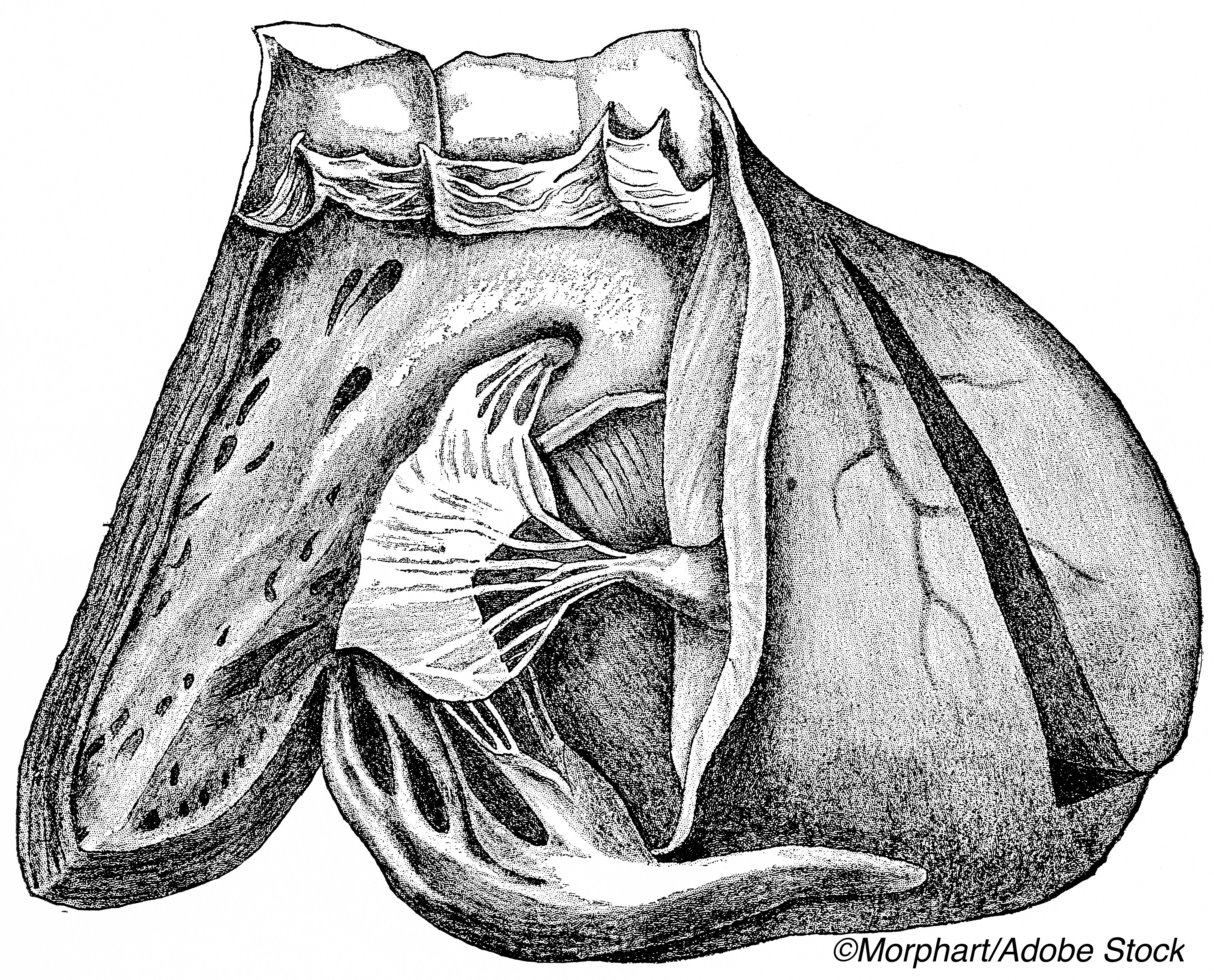Among patients hospitalized with Covid-19, adverse right ventricular remodeling on transthoracic echocardiography was a significant predictor of mortality, independent of standard clinical and biomarker-based assessment.
In a retrospective study of outcomes among just over 500 patients treated for Covid-19 at three New York City-area hospitals, those with both adverse right ventricular (RV) remodeling — reflected as RV dilation or dysfunction — and elevated troponin, ferritin, or D-dimer levels had the highest risk for death.
Echocardiograms were performed a median of 6 days after hospital admission based on high suspicion of RV remodeling, and RV dilation was present in 35% of cases while RV dysfunction was present in 15%.
Adverse RV remodeling was found to confer a more than 2-fold increased risk for death after controlling for age and biomarker elevations.
The findings, published in the Journal of the American College of Cardiology, suggest that adverse RV remodeling is “a powerful prognostic indicator in patients with Covid-19, for which predictive utility is incremental to routine clinical and/or biomarker-based assessments,” wrote researcher Jiwon Kim, MD, of Weill Cornell Medicine, New York City, and colleagues.
The researchers noted that further study is needed “to elucidate inflammatory pathways and myocardial tissue properties responsible for RV dysfunction in patients with acute Covid-19, as well as whether Covid-19 survivors with adverse RV remodeling are at residual risk for adverse clinical outcomes.”
Cardiac injury is recognized as a potential occurrence in the setting of severe Covid-19, with an early study from Wuhan, China finding cardiac injury to be present in 7.2% of patients hospitalized with the disease and 22% of hospitalized patients requiring ICU care. Another study showed cardiac injury to be strongly associated with Covid-19 mortality, occurring in 46% of non-survivors, compared to 1% of survivors.
“Adverse cardiac chamber remodeling has been reported in patients with Covid-19,” Kim and colleagues wrote. “Given that this condition confers high risk for lung involvement, a key area of focus has been adverse right ventricular remodeling.”
They noted that while earlier single center studies have shown RV dilation and dysfunction to occur with Covid-19 infection, the prognostic utility of RV remodeling in severe Covid-19 has been unknown.
Their study included 510 patients (age 64±14 years, 66% men) hospitalized for Covid-19 and evaluated for RV dysfunction due to dyspnea/respiratory decompensation (88%), hemodynamic instability (62%), known/suspected myocardial infarction (12%) and/or arrhythmia (7%).
RV dilation and dysfunction were present in 35% and 15% of the patients, respectively, and RV dysfunction increased stepwise in relation to RV chamber size (P=0.007).
During a median inpatient follow-up of 20 days, 32% of patients died and 45% were discharged.
Among the main study findings:
- RV dysfunction (hazard ratio [HR]: 2.57; 95% CI, 1.49-4.43; P= 0.001) and dilation (HR: 1.43; 95% CI: 1.05-1.96; P=0.02) were both independently related with mortality risk.
- Patients without adverse RV remodeling were more likely to survive to hospital discharge (HR: 1.39; 95% CI: 1.01 to 1.90; P=0.041).
- The risk for death was greatest among patients with adverse RV remodeling and positive biomarkers and was not as great among patients with isolated biomarker elevations (P≤0.001).
“Our observed link between adverse RV remodeling and death may stem from hemodynamic stimuli in which RV dilation is an initially compensatory adaptation to increased RV afterload and/or augmented pulmonary circulatory requirements in context of Covid-mediated hypoxia, but ultimately leads to increased RV wall stress and subsequent dysfunction,” Kim and colleagues wrote.
Consistent with this hypothesis, their findings demonstrated that RV dysfunction was 2-fold less common than dilation and occurred most often among patients with the greatest dilation.
“More specifically, hypercoagulability and high rates of thrombotic events are known to occur in Covid-19 patients among whom coagulopathy can involve the venous, arterial, and microcirculatory systems,” they wrote. “Thromboembolism and microthrombi due to Covid-19 infection-related inflammation, hypoxia, and diffuse intravascular coagulation has the potential to augment RV afterload leading to RV dilation and ultimately resulting in RV dysfunction/failure.”
In commentary published with the study, cardiologists Patricia Pellikka, MD, of Mayo Clinic, Rochester, Minnesota and Tasneem Naqvi, MD, of Mayo Clinic, Scottsdale, Arizona wrote that the findings from this and other studies suggest a key role for echocardiography in understanding cardiovascular injury associated with Covid-19.
“The long-term cardiovascular sequelae of Covid-19, including the impacts of clinical and subclinical myocardial injury and inflammation, chronic pulmonary dysfunction, exacerbation of underlying heart disease, and profound deconditioning, will be a subject of continued study,” they wrote.
- Among patients hospitalized with Covid-19, adverse right ventricular remodeling on transthoracic echocardiography was a significant predictor of mortality, independent of standard clinical and biomarker-based assessment.
- Hospitalized Covid-19 patients with both adverse right ventricular (RV) remodeling — reflected as RV dilation or dysfunction — and elevated troponin, ferritin, or D-dimer levels had the highest risk for death.
Salynn Boyles, Contributing Writer, BreakingMED™
Funding for this research was provided by the National Institutes of Health and he Bruce B. Lerman Clinical Scholoar Award.
The researchers declared no relevant disclosures related to this study.
Cat ID: 914
Topic ID: 74,914,914,190,926,192,927,925,934




Create Post
Twitter/X Preview
Logout